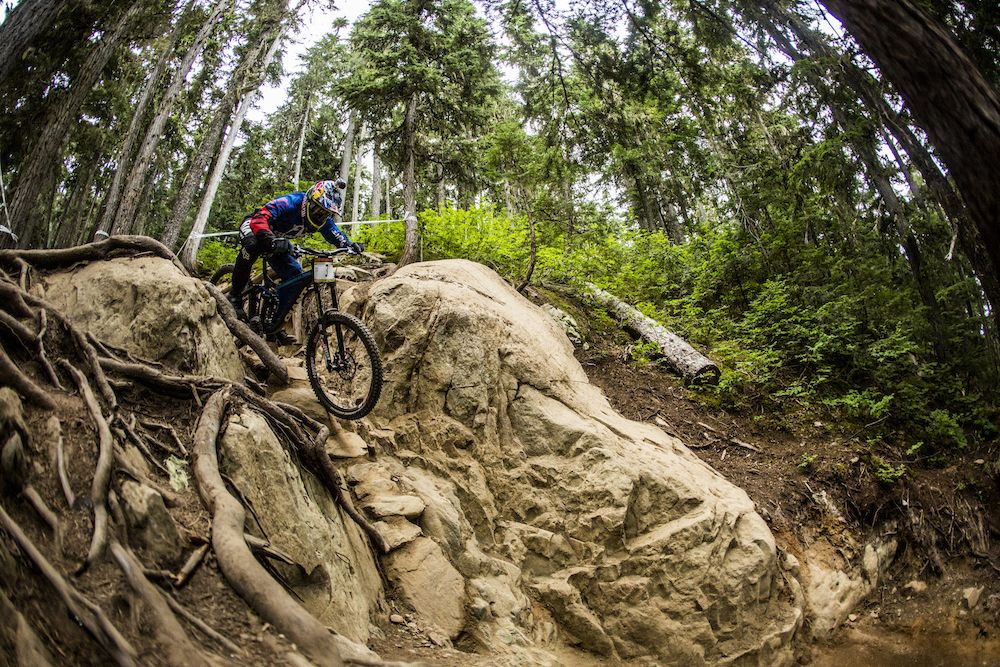Nearly 50 years after its opening, Whistler soars on two wheels more than a pair of skis in 2015
Since its opening in 1966, Whistler has gone from being the site of several earlier resorts to the singular, definitive name in winter sports on Canada's west coast -- at least until the last twenty years.


Nearly fifty years ago, Whistler officially went from being the site of several earlier resorts to the singular, definitive name in winter sports on Canada’s west coast — at least until the last twenty of those years. Since its official opening in January 1966, the mountain has been synonymous with daredevil skiers and snowboarders, its slopes fast becoming the dream destination for countless winter warriors worldwide.
In Whistler’s most recent years, though, a different kind of downhill excitement has started to dominate at the British Columbia alpine resort, just outside Vancouver. Though less about snow and more about dirt, mountain biking, as much as anything else, has become the location’s standard-bearing sport.
A 30-minute film made to commemorate Whistler’s commanding 50 years, the Vancouver Sun reports, subtly but significantly testifies to that.
The film is called 50 Years of Going Beyond, and for much of its opening 28 minutes, the action of the documentary depicts the pioneers of the resort, like those whose snow-shredding talent on a pair of skis built the mountain into what it’s become by 2015. Scenes of the World Cup skiing competitions of the 1980s feature prominently; images from 2010, of course, are those of the jubilation of that year’s Winter Olympics. Finally, the film culminates with the sight of a slope-riding downhill cyclist launching over the crowd, the narration of that moment noting how unanticipated such a thing would be for those who established Whistler in its infancy.
“It’s unlikely,” the narrator said, “any of the original pioneers could have imagined what Whistler would become in just 50 years. Where the biggest event of the year would be witnessed by fans wearing shorts and T-shirts rather than ski jackets. Probably not.” According to 89-year-old Jim McConkey, the all-terrain downhill skiier who became the mountain’s inagural ski director nearly 50 years ago, the explosion of downhill cycling at Whistler would indeed have been rather unexpected.
“I know all the guys who started Whistler,” he said, amused, in an interview with the Sun. “They’d roll over in their graves.”
Crankworx is perhaps the strongest example of how Whistler has gone from being principally a ski resort to a global magnet for cyclists. In just over 10 years, the mountain bike festival has paralleled the phenomenal rise of downhill riding with its own, going from a three-day event in 2004 to the 10-day, worldwide freestyle celebration that it’s become. In that time, the Sun adds, it’s likely eclipsed the Whistler Ski and Snowboard Festival, an early-spring mainstay of the Whistler scene for 20 years, as the resort’s premiere, defining sports event. When the Red Bull Joyride slopestyle competition kicks off, for example — the marquee competition at Crankworx — 30,000 people turn out to watch riders soar. Crankworx crowds even swell beyond the records set by the skeleton or luge World Cups seen at Whistler since 2010, and well past the attendance numbers of the Canadian alpine championships.
Nobody, it seems, is more aware of the success of Cranworx — or the emergence of Whistler as one big temple to all things mountain biking — than the festival’s general manager, Darren Kinnaird.
“I don’t like to toot my own horn, but yes,” he told the Sum. “Crankworx was an original — a celebration of a great bike park in the mecca of freeride and gravity mountain biking.”
